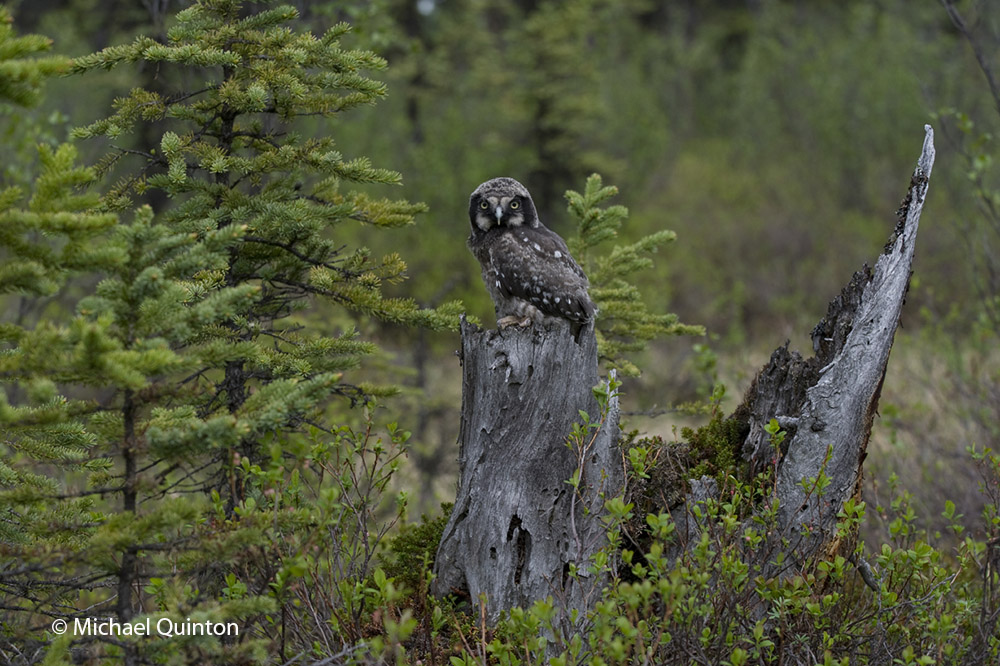Adult, male Steller’s sea lion on the prowl in Prince William Sound. Pink salmon, the most numerous of Alaska’s five species of salmon are schooling by the thousands just offshore. The pink salmon returning to their freshwater spawning streams are dogged by a gauntlet of predators including, harbor seals, bald eagles, killer whales and sea otters as well as Steller’s sea lions. Continue reading
Tag Archives: predator
HAWK OWLS ON THE MOVE
 Though unable to fly three-week old hawk owlets are ready to make the leap.
Though unable to fly three-week old hawk owlets are ready to make the leap.
 For young hawk owls the ground is a dangerous place. Continue reading
For young hawk owls the ground is a dangerous place. Continue reading
HUNTING LIKE A HAWK
 A northern hawk owl perched atop a dead, black spruce overlooking its preferred hunting grounds, an Alaskan muskeg wetland.
A northern hawk owl perched atop a dead, black spruce overlooking its preferred hunting grounds, an Alaskan muskeg wetland.
The northern hawk owl is named after its hawk-like hunting behavior. Like hawks, the hawk owl hunts by day using its keen eyesight to spot small birds and mammals. The red-backed vole is by far the most important prey species. But the hawk owl is an opportunist and other species of voles and several species of shrews are also caught. During those years when snowshoe hares are plentiful, hawk owls will add these much larger prey species to their list, as will many species of birds from the tiny, common red-poll to birds up to the size of ptarmigan. Continue reading
COYOTE
Twenty years ago, coyotes were one of my favorite photo subjects. This extremely adaptable species was both deadly hunter and scavenger. Nothing it seemed, was too large or too insignificant, too old or too new, to be left off the coyotes menu. Whether it was big game or game birds, domestic sheep or farm-yard chickens, coyotes made few friends. I guess I was one of just a few. The sheer variety of behavior they would engaged in, made each and every encounter a new and exciting adventure.
 Coyote feeds on an elk in Wyoming. Tracks and blood in the snow told the story. Coyotes had harassed a cow and her big calf through the night. By morning at least thirteen coyotes had assembled and were finally able to bring down the large calf. Twelve hours later there was only a large trampled area of blood and hair remaining. Continue reading
Coyote feeds on an elk in Wyoming. Tracks and blood in the snow told the story. Coyotes had harassed a cow and her big calf through the night. By morning at least thirteen coyotes had assembled and were finally able to bring down the large calf. Twelve hours later there was only a large trampled area of blood and hair remaining. Continue reading
THE ALASKAN MOSQUITO
The mosquito is the worlds most dangerous insect. Luckily, none of Alaska’s three dozen species or so is known to transmit disease. Though not deadly in the far north, they are none the less very troublesome. Here are a few other facts about Alaska’s mosquitoes. Only females bite. Some species prey on cold-blooded wood frogs. Some species live around 8 weeks as adults. The snow mosquito over winter as adults and may live a year. Populations can move 25-50 miles. Larva and pupae live in water. Continue reading

